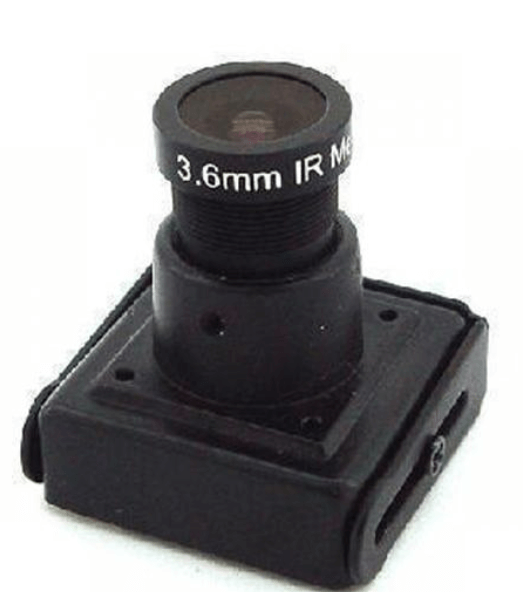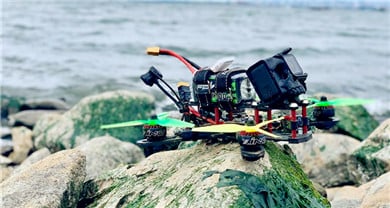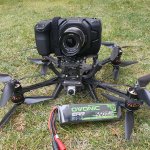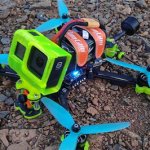camera
The most popular camera is the CCD camera. CMOS cameras are also common. Thanks to the huge surveillance equipment industry, we have hundreds to thousands of cameras to choose from. From brand cameras to small pinhole cameras, and even camera parts that need to be assembled by yourself, you can buy almost anything you want. Now some high-definition cameras even provide video output interfaces, but it should be noted that image transmission still returns ordinary standard definition images, you can still use them, but I do not recommend using the output signals of high-definition cameras as return images.

Backlight compensation(BLC)
BLC, also called backlight compensation, is an important performance indicator. In bright outdoors, against a bright sky background, many cameras have difficulty capturing details on the ground, so that the entire ground becomes a bright gray spot. The backlight compensation performance of the camera is quite different. It is recommended to investigate what cameras are used by the enthusiasts around and why they are chosen. Generally speaking, higher rated cameras are often more appropriate. Another important point is how the camera performs in a dim environment. These requirements have also caused many surveillance cameras to be difficult for FPV in practice.
Lens
Another important part of the camera is the lens. The smaller the focal length, the wider the viewing angle. For example, the angle of view of a 2.1mm lens is about 120 ~ 150 degrees, and the angle of view of a 3.8mm standard lens is about 70 ~ 90 degrees, while the angle of view of a 6mm ordinary lens is only 60 degrees, but it can clearly image regardless of the distance of the object. What does this have to do with the distance of the object? The wide-angle lens will make the object appear farther than it actually is, and the movement speed of the environmental object will appear slower, suitable for beginners, but the object will appear small and not so clear. Most enthusiasts choose 2.8 ~ 4mm lenses. This kind of lens makes the distance of the object appear to be twice as far as the actual distance, but has a wider viewing angle.

Resolution
High resolution allows you to better capture the details of objects. 420TVL is sufficient most of the time, and 700TVL is basically the upper limit of the cameras currently on the market. If you want to fly high in the air or see details like birds in the air, then you can choose a high-resolution camera. For general flight, 420TVL is enough and cheap.
The image transmission system generally can only transmit a resolution of about 480TVL, but why do we need a higher resolution camera? Higher resolutions can capture smaller objects and details. Even if the image is not very sharp, it can help you distinguish objects such as wires, birds, and distant pedestrians. Although it may look like a small pixel, it can help you avoid obstacles such as wires or birds.
A word of advice: It ’s best to stick the cables to the camera, they are easy to loose and damage, after all, losing images in the air is terrible.
Screen
You uploaded the image from the plane. How do you view the image? Is it OK to buy a small screen and plug it in? It’s not that simple. Because there is a situation that is blue screen. Many display screens automatically fall into the blue screen when the video synchronization signal is weak. In FPV, the blue screen means the plane blew up.
so what should I do now? One way is to buy FPV-specific video glasses or screens, most of which are non-blue screen displays. Head-mounted video glasses also generally allow users to wear glasses at the same time. For example, Prober EVG920 video glasses (also called R-Visions), it also uses a non-blue screen design, and the display effect is good. Another common is the Fatshark glasses, which have built-in image receivers and are the lightest video glasses like Foxtech glasses. There are also some non-blue screen LCD displays on the market to choose from.
Another way to deal with the blue screen is to first transfer the image signal to the video recorder (DVR), and then connect the output signal of the video recorder to the display screen. Because the video recorder can keep the video synchronization signal output when there is no valid video signal input, this can avoid the blue screen caused by the loss of the synchronization signal.

3D and HD FPV
3D FPV is a newer concept at present, but buying a 3D screen is not enough. You also need to buy a dedicated 3D imaging camera. Generally, such a camera contains two cameras and is expensive. Another problem is that it has half the resolution of traditional non-3D images (QVGA quality).
HD FPV, which is high-definition FPV, is not yet mature; it requires a large wireless transmission bandwidth. When using traditional analog image signal wireless links, the effective distance is very short, and the use of image compression technology will bring larger Image delay. Therefore, it is impossible to achieve high-definition FPV with only one high-definition camera, unless you use expensive high-definition digital image transmission system.
Video
Why video? po online? Of course, this is one aspect, and the real benefit of video is that when your plane explodes, playback of the video can help you determine the final crash location. As long as you install a video recorder and play back the last few seconds of the bombed image, it will help you to determine the exact location of the aircraft. Google Satellite Maps can even be used to help locate aircraft when needed. After all, memory cards and video recorders are now cheap, and losing a plane can be a big loss, so installing a video recorder is necessary. It is more convenient if it is a built-in DVR receiver or video glasses.
In addition to the camera, the selection of other components such as LiPo battery, antenna, frame, motor, etc. are very important. Therefore, before build an FPV, it is very beneficial to learn more about some related information.



